Introduction to Hakata Ramen
Hakata Ramen is not just ordinary Japanese ramen, it is one of the “Japan’s Three Great Local Ramen”. Along with “Sapporo Miso Ramen” and “Kitakata Ramen”, Japanese people loved this trio for a long time. Hakata Ramen is tonkotsu or pork bone ramen mainly offered in Fukuoka City, Fukuoka Prefecture. Its popularity easily exceeds the frame of local ramen, and it is spreading not only in Japan but also in the world. By the end of the article, you will be able to tell why is Hakata Ramen popular in Japan and the world. Also, you will be able to learn how to make one on your own.
Etymology
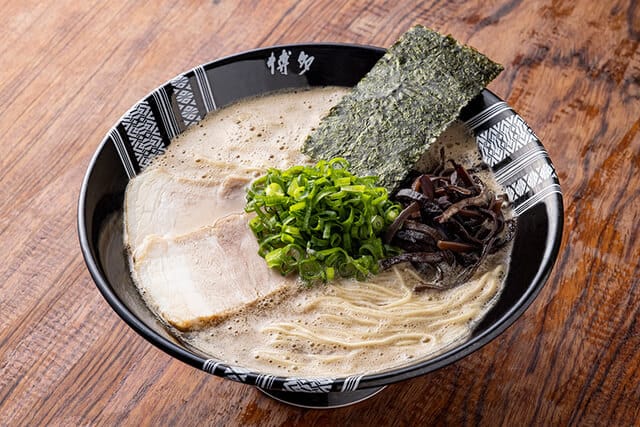
Hakata Ramen came from “Hakata (博多)” which is the name of a business district in Fukuoka City, Fukuoka Prefecture. In 1955, the founder of Hakata Ramen, Yasunori Tonomura invented the name “Hakata Ramen” in Nishijin, Fukuoka. While it was named after its place of origin, now there are many Hakata ramen shops are all over Japan.
What is Hakata Ramen?
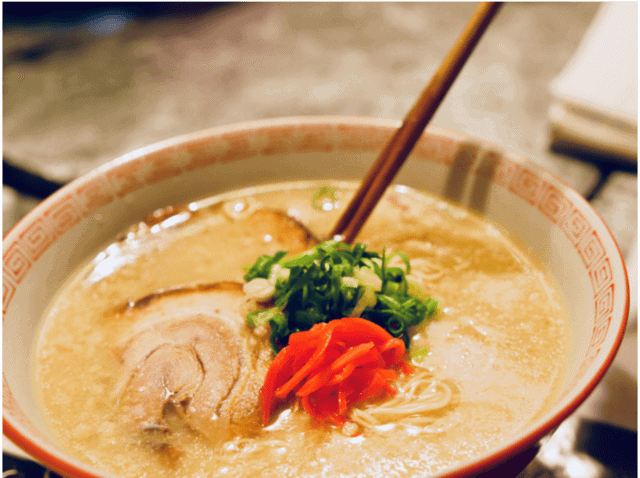
Hakata Ramen (博多ラーメン) is a traditional Japanese food that consists of ultra-fine straight noodles with a cloudy tonkotsu soup. It is a pork bone or tonkotsu ramen mainly offered in Fukuoka Prefecture. Additionally, the main features of Hakata ramen are its “thin noodles” and “replacement balls. This ramen is one of the “Japan’s Three Great Local Ramen” along with “Sapporo Miso Ramen” and “Kitakata Ramen”. The seasonings and colors vary from store to store, but basically, the feature is a milky white soup made mainly of pork bones and extra-fine noodles. Since locals boiled the pork bones over high heat, the gelatin of the bones dissolves and the soup becomes cloudy.
Its popularity easily exceeds the frame of local ramen. Due to the local ramen boom, ramen shops have increased and become established mainly in Fukuoka City and its suburbs. It is also popular as a sightseeing spot in Fukuoka, such as ramen tour planning and “Ramen taxi ” service. With the nationwide expansion, stores opening in Osaka and Tokyo, opening stores in ramen food theme parks nationwide, and selling cup noodles bearing the name of famous stores, the name of this ramen has risen nationwide.
History of Hakata Ramen
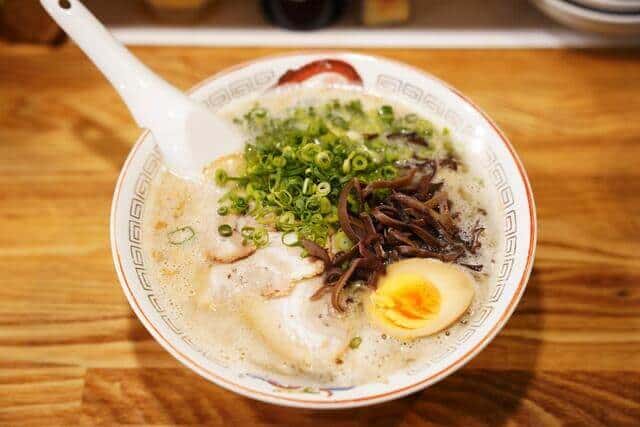
The history of Hakata Ramen goes back to the early postwar period. Some said that the roots of tonkotsu ramen spread throughout Kyushu in Japan by withdrawn people from Manchuria at that time. Many people think of Hakata / Nagahama when they hear it as tonkotsu ramen. However, the birthplace of tonkotsu ramen said to be the originator, is Kurume City, Fukuoka Prefecture.
The beginning of Tonkotsu ramen in Kyushu is the ramen stand “Nankin Senryo”. It opened on Meiji-dori in front of Nishitetsu Kurume Station in 1945. Then, around 1945, Mr. Tokio Miyamoto, the founder of “Nanjing Senryo” after getting information on Chinese noodles soup made by adding chicken bones and a small number of pork bones, which was popular in Yokohama and Tokyo at that time, trained at a local Chinese noodle shop.
Initially, the tonkotsu ramen made in Kurume was eventually made in Hakata, and it developed uniquely as Hakata ramen. Anyway, people in Hakata have been busy with business or work. They have to work from early morning to late night in hours. So ideally, they need a meal that is easy to make and can be eaten quickly before going to work.
The Hakata Ramen Recipe
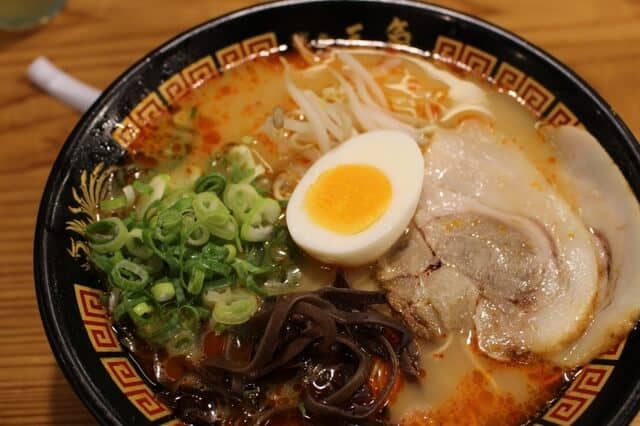
Hakata Ramen Ingredients
| Hakata Ramen Ingredients for 6 people | |
| Pork Bones | |
| slab of pork bone | 900g |
| soy sauce | 120g |
| sake | 240g |
| mirin | 240g |
| sugar | 100g |
| scallions, roughly chopped | 100g |
| whole garlic cloves | 30g |
| knob ginger, roughly sliced | 7g |
| whole shallot, split in half (skin on) | 30g |
| 麻油 | |
| 菜籽油或植物油 | 60g |
| 蒜瓣,切碎 | 50g |
| 烤芝麻油 | 60g |
| 高湯 | |
| 豬腳,縱向切開或橫向切成1英寸的圓片 | 135g |
| 去皮及多餘脂肪的雞背和雞骨 | 900g |
| 植物油 | 28g |
| 大洋蔥,切粗 | 150g |
| 蒜瓣 | 60g |
| 薑塊,切粗 | 8g |
| 整根韭菜,洗淨並切粗 | 250g |
| 蔥白部分 | 360g |
| 整個蘑菇或蘑菇屑 | 170g |
| 豬背脂塊 | 450g |
| 麵條 | |
| 干拉麵麵條 | 115g |
如何製作博多拉麵?
豬骨的準備
將豬骨捲起,然後用廚房繩捆好,這樣在烹飪過程中不會散開。
將烤箱預熱至275°F/140°C。
將所有剩餘的材料加上一杯水放入荷蘭鍋中,然後將豬骨放入液體中。蓋上鍋蓋,但不要完全蓋上。放入預熱的烤箱中煮3-4小時。
煮好後,轉移到新鍋中,然後蓋上鍋蓋,待室溫冷卻後放入冰箱冷藏至冷卻。然後過濾液體並保留用於拉麵蛋,取下繩子,然後切薄片。
麻油
將大蒜和菜籽油加入鍋中,用小火煮10分鐘,不斷攪拌至變黑。轉移到攪拌機中,加入芝麻油,然後攪拌約30秒,使大蒜完全分解。
存放在密封容器中,放入冰箱保存,最多可保存兩個月。
湯底
將雞骨和豬骨放入冷水鍋中煮至沸騰,然後從火爐上取下。
倒掉水並在冷水下清洗骨頭,去除所有黑色污垢和泡沫,以及骨頭內外的骨髓,使它們潔淨無瑕,呈白色/灰色。
在油鍋中燒烤洋蔥、大蒜和薑15分鐘,經常攪拌。
將骨頭、燒烤過的蔬菜、豬背脂、蘑菇、韭蔥、蔥和冷水放入鍋中,確保骨頭和蔬菜被大約兩英寸(5厘米)的水覆蓋。
用高火煮至水沸騰。如果出現泡沫,將其去除,並清潔鍋內側的任何泡沫。當表面不再出現泡沫時,將火調至小火煨燉,然後蓋上鍋蓋。
煮約4小時,直到豬背脂熟透,然後將豬背脂從鍋中取出,放入可密封的容器中,冷藏至待用。繼續煮6-8小時,如果需要,添加更多的水以覆蓋骨頭和蔬菜。
當湯底完成後,調高火力讓湯再次煮沸。讓它煮沸直到減少到3夸脫(2.8公升)。
扔掉固體物質,使用細網篩過濾湯底。將豬背脂切成小塊並攪拌入湯中。
麵條和上桌
分別煮每一份麵條。
首先,對於每一份麵條,加熱一升水至沸騰,然後將麵條放入水中,按照包裝上的說明煮熟,用筷子或夾子攪拌,以免麵條粘在一起。
將湯底分成6碗,然後根據口味加入麻油醬調味。
加入麵條,攪拌,然後加上叉燒豬肉和切碎的蔥綠部分。
如果製作拉麵蛋,將每個雞蛋縱向切成兩半,然後在每碗中放入兩半。
博多拉麵的營養好處
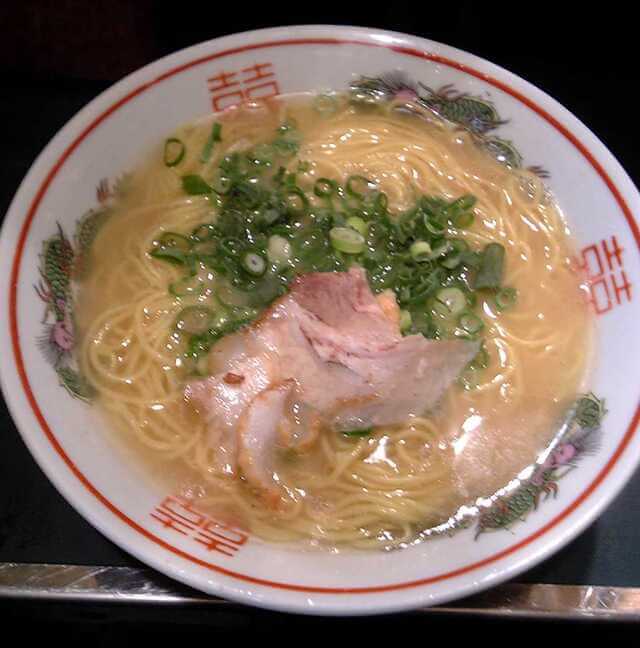
濃郁湯頭的豚骨拉麵與麵條交織在一起,特別美味。豚骨湯雖然脂肪含量高,看起來熱量很高,但豚骨拉麵的高熱量和高糖分是由麵條引起的。即使是看起來熱量很高的豚骨湯,只有32卡路里。與其他拉麵相比,豚骨拉麵的熱量較低,但豚骨拉麵的熱量仍然比味噌拉麵低。如果你真的想在減肥時吃拉麵,應該選擇簡單的湯,如醬油或鹽味湯。
博多拉麵、長濱拉麵和久留米拉麵的區別
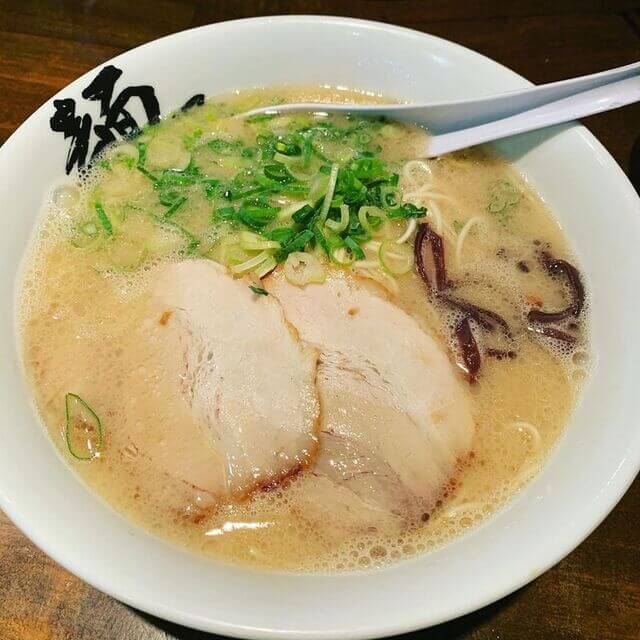
與其他福岡拉麵,如博多拉麵或長濱拉麵和久留米拉麵之間的最大區別在於當地人提取其風味的方式。久留米拉麵是用圓底烹飪鍋稱為羽釜的鍋中煮湯底。而博多和長濱品種則在稱為筒鍋的高湯鍋中烹煮。這種方法稱為鳥切,湯底每次使用完完全更換。
為什麼豚骨拉麵很有名?
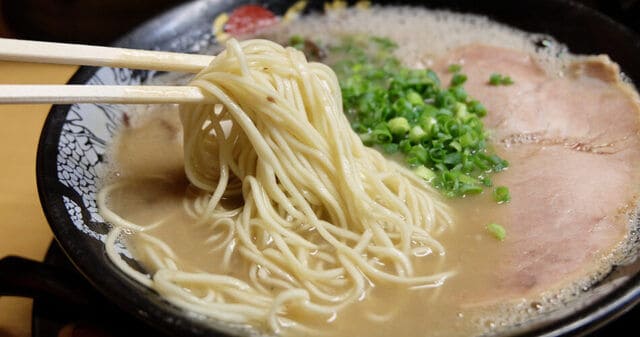
在過去的幾十年裡,豚骨味道一直是拉麵行業的主流,因為它是拉麵中最美味和最令人滿足的味道。慢煮的豬骨變成濃郁、濃稠和奶油狀的湯,吸引了世界各地的人們。
推薦的博多拉麵餐廳
博多一双
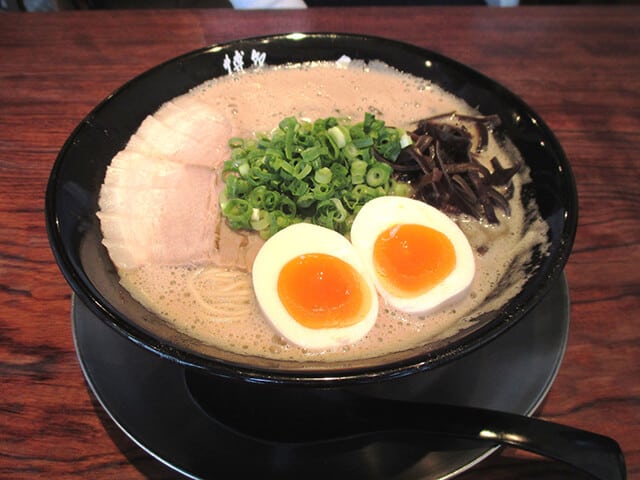
“博多一双”提供的博多拉麵達到了另一個層次。漂浮在湯中的泡沫經過精心煮製,直到骨頭變得嫩滑,湯頭濃郁奶油般的口感。搭配細平麵條的柔滑質地,這些麵條的更換率達到80%,特意考慮到湯的纏繞,口感極佳。
博多だるま
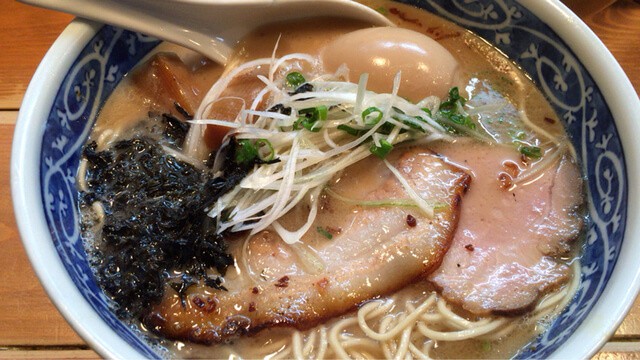
博多だるま的博多拉麵是店主為了追求符合時代需求的創意而創造的。繼承了前輩製作的嚼勁十足的超細直麵所製作的濃郁鮮艷湯頭。這款豚骨拉麵是一款健康拉麵,不使用化學調味料,特別注重無添加成分,真正現代化。
一幸舍福岡
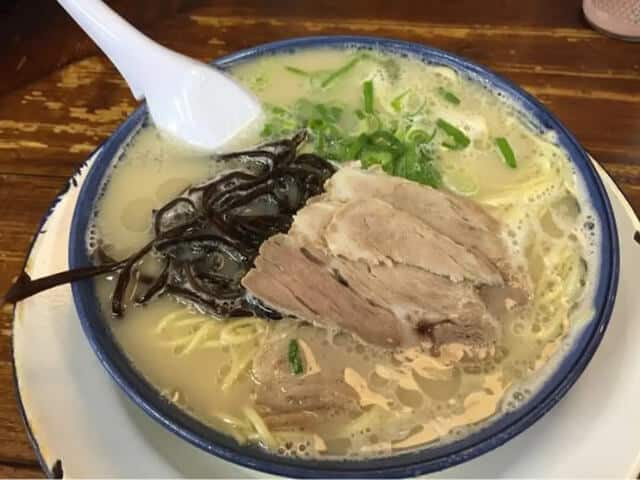
這家餐廳由充滿工匠精神的店主於2004年創立。店主始終希望製作出福岡最美味的豚骨拉麵,這種味道在其他地方無法找到。湯頭充分發揮了豬骨的奶油味和風味。這種湯頭的豬骨香氣、脂肪和水融合在一起,形成了細膩的泡沫。具有嚼勁和脆感的自製麵條與濃郁的湯頭搭配得非常好。
博多元氣一杯!!
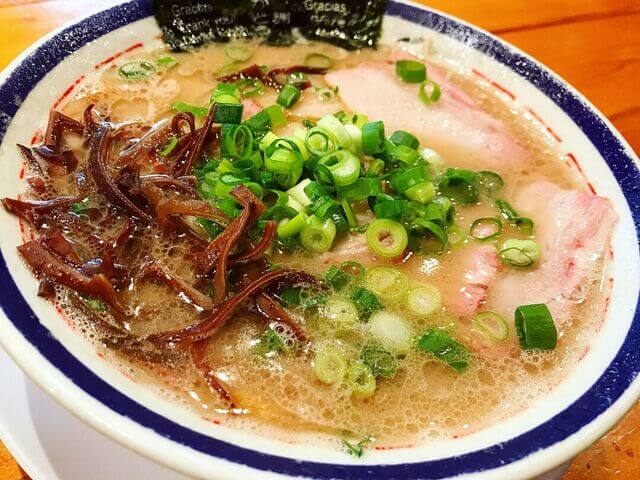
這家店不僅以其味道聞名,還以其無招牌的奇特拉麵店聞名。掛在入口前的藍色桶子是營業的標誌。店主通過煮製豬骨的每一部分製作出濃厚的湯頭,看起來像是濃湯。這種奶油般的豚骨湯是店主自學研究的特色。叉燒有著完美的瘦肉和脂肪平衡,你可以享受到濕潤和柔和的口感。整體口感光滑且略帶甜味。
結論
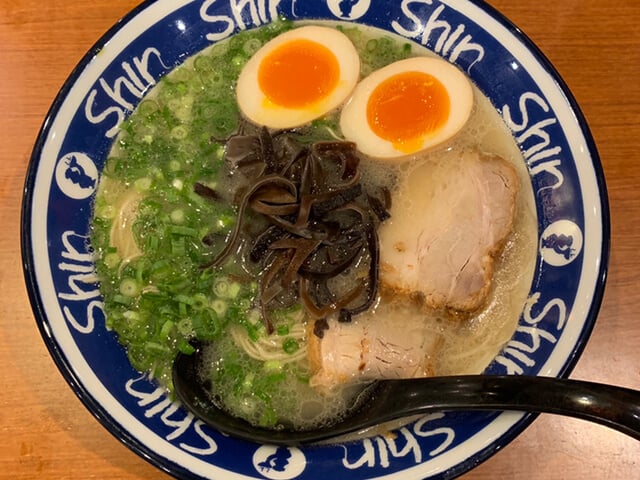
拉麵正在迅速成為全球最受歡迎的日本食物。近年來,在日本以外的城市中,拉麵店開始如雨後春筍般出現,這可以被形容為一場「拉麵熱潮」。令人感到困惑的是,為什麼博多拉麵能夠最快地傳播到全世界。事實上,其他類型的拉麵,如經典的東京醬油拉麵,有著悠久的歷史。此外,由於東京擁有更多的觀光客,他們似乎也有更多的機會將拉麵傳播到其他國家。然而,似乎來自福岡的拉麵愛好者,無論出於什麼原因,都最熱衷於將他們特有的拉麵傳播到日本其他地方及全世界。

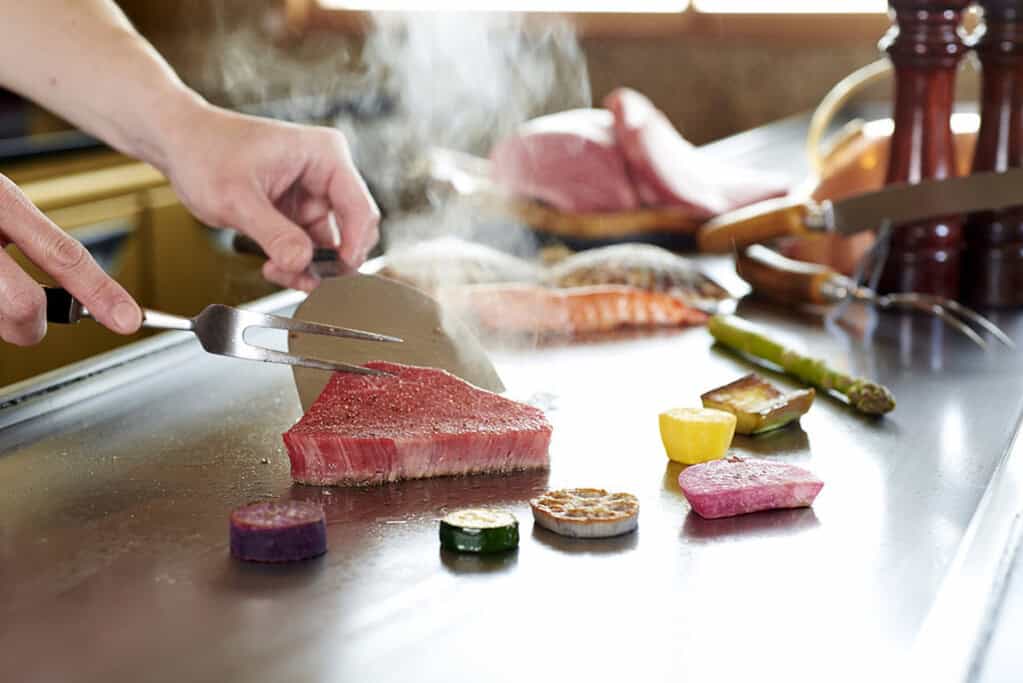
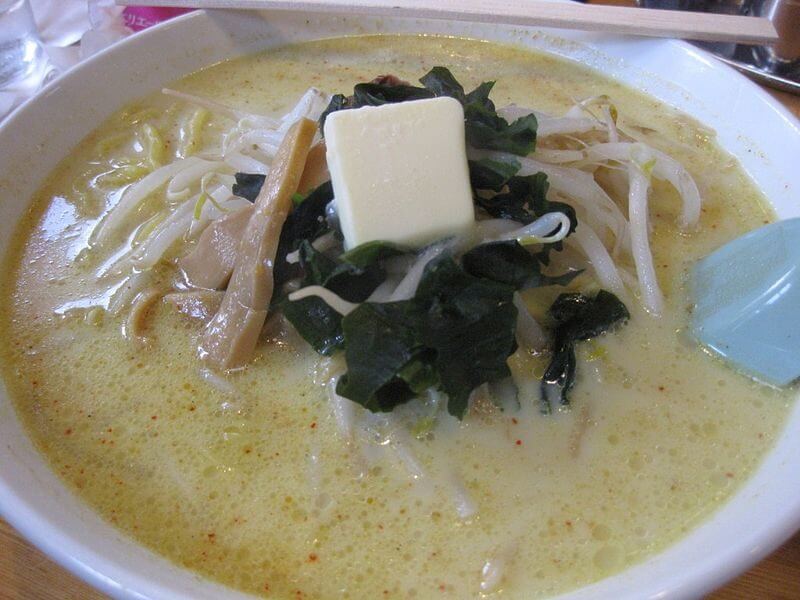
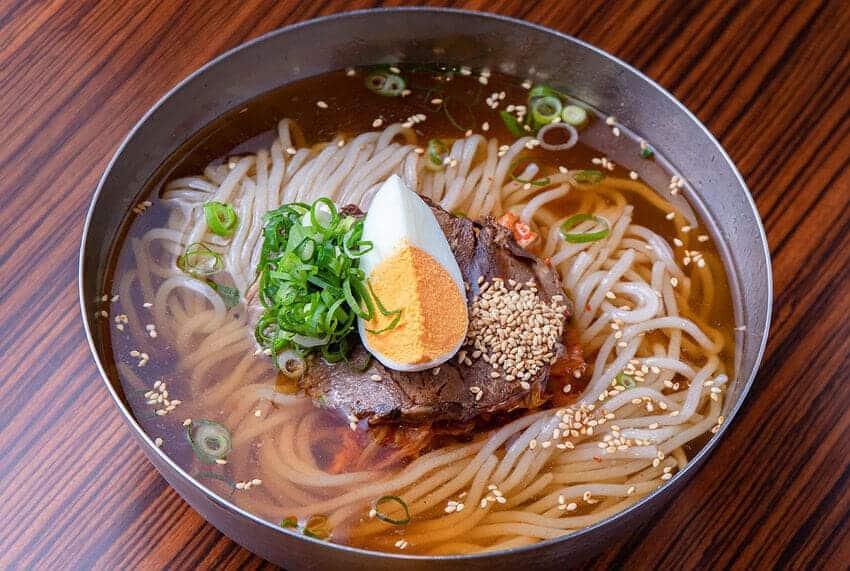
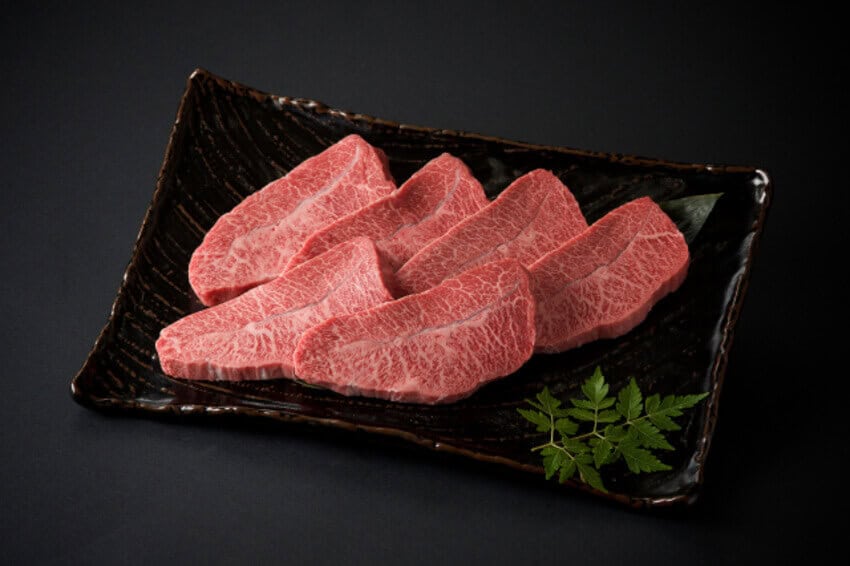

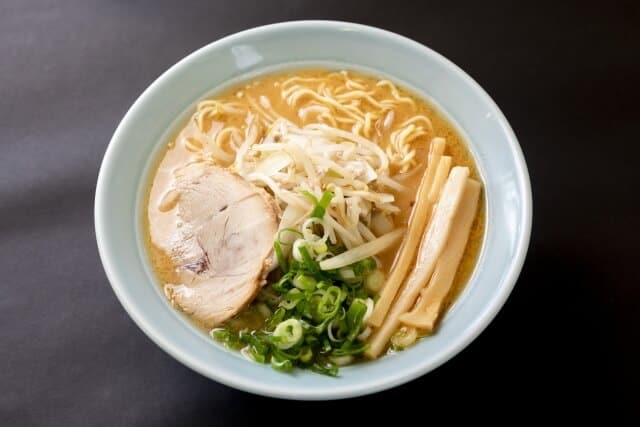
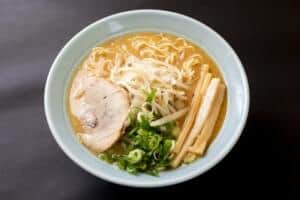
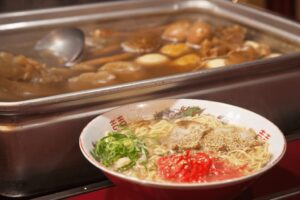

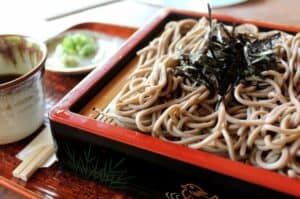
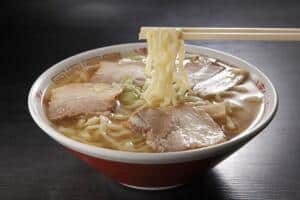
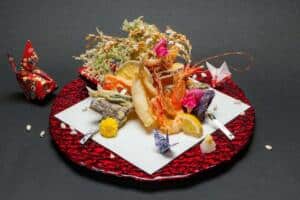
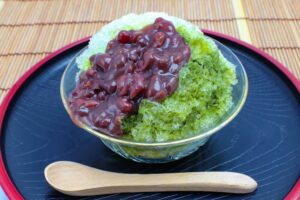
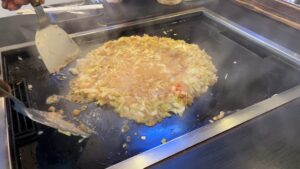
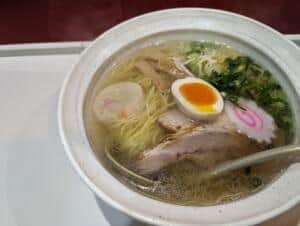
コメント